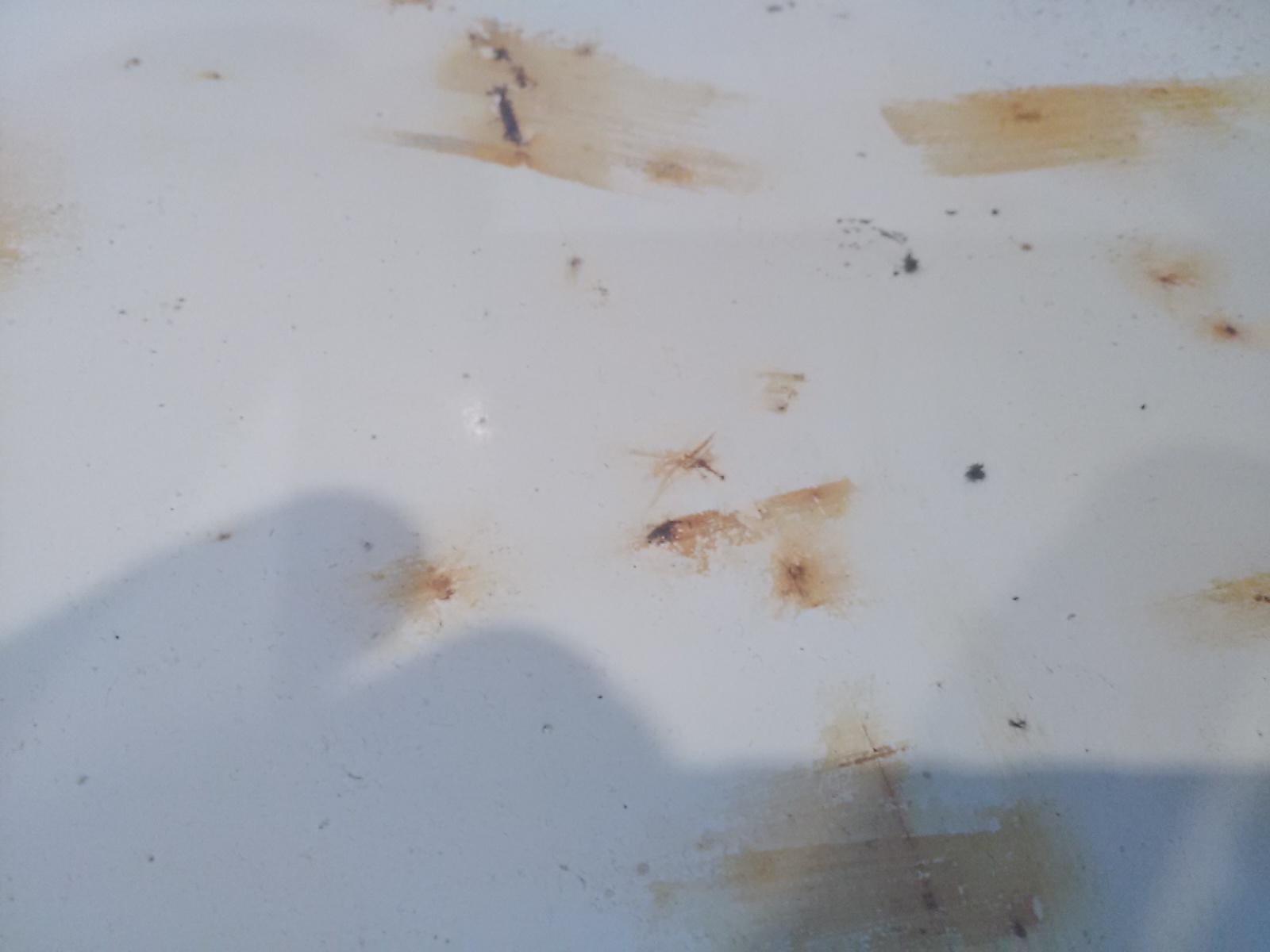A chemist told me rust does not spread. The top of my refrigerator gives me some doubt. It’s covered in these spots. The center of every spot is a small break in the paint, but the rust all around those spots is on top of the paint.
Yes, rust spreads.
Rust mechanically destroys the protection the surrounding metal has against rust. Once the protection is gone, the actual rusting is quite fast.
That is, if you have a surface like the one on your photo. If you have a single material, then no, rust doesn’t spread.
Probably rust particles that have spread around in condensation - should be able to wipe that right off (not the actual rust at the break in the paint, of course)
It does not wipe off with a rag. I have some proprietary rust stain removal liquid, which I think is intended for when rust gets on fabric. But I guess I’ll try it on these spots. Otherwise I’m left with some kind of abrasive approach.
The conditions for rust would be difficult to have but only have them at a single point. The conditions cause rust, then cause more rust, but because of the conditions and not because the rest is already there. In your case, once paint cracks (even pinhole sized), conditions cause rust, which causes more paint to come away from the surface so the conditions for rust touch a larger area.
I’m not sure how to implement it in this case but you might have luck with using something like this to prevent further spread: https://en.m.wikipedia.org/wiki/Galvanic_anode
I think a sacrificial anode would only provide protection if the fridge were submerged underwater, or otherwise surrounded by an electrolyte.
Oh shit, you’re right. Gotta keep the fridge in salt water, then.
There are rust-converting coatings that don’t even require sanding, and can be painted over.
And there are epoxy appliance paints that can look ok with a little practice.
It doesn’t spread. I’m guessing the “spread” effect was caused by being moved around by water.
I struggle to believe water pooled up enough to carry stuff. Condensation is possible perhaps to the extent of having some invisible amount of sweat. Unless there were puddles that formed and evaporated before I saw it. Though it’s a short fridge. The top of it is at eye level so I see the top every day.
Here’s another pic:

Your fridge may be made from some steel that is susceptible to rust, and the paint protects it. When iron rusts, the iron oxide product is that red stuff, which is not protective and flakes away, revealing more material that can then rust.
Stainless steel has chromium which oxidizes before the iron, but chromium oxide is strong and forms a protective barrier preventing additional material from oxidizing. Though certain environments, such as high temperature or moisture can cause the chromium oxide layer to fail.
Practically speaking, i’m not sure what the best fix would be. If you could prevent oxygen from getting to the bare metal, that should prevent further corrosion.
The old-school marine approach is Naval Jelly (as in Navy, not your navel). I keep a bottle around for kitchen and bath stuff. It will remove rust like this pretty quickly (a few minutes).
But then you must immediately coat it, with something like appliance epoxy paint. Or anything impervious to water, even just a quick layer of vaseline (not that I’d recommend it).
I don’t recall for sure, but I think Por-15 is a rust converter (been a while since I’ve used it). Rust converters don’t require much prep, just wire brush off the loose stuff.


